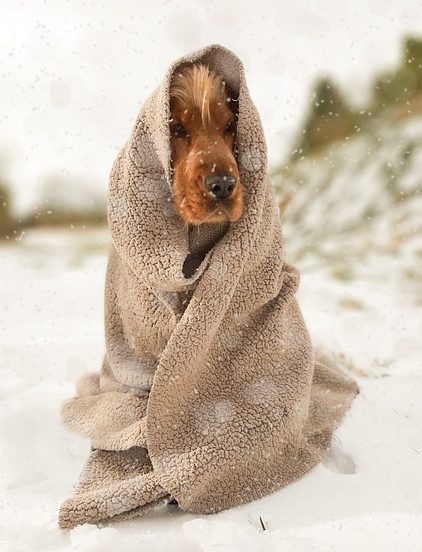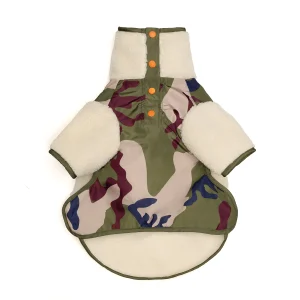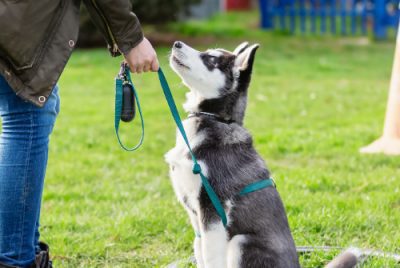Essential Tips for Keeping Dog Warm in Winter
Post Disclaimer
We may earn a commission for purchases made using our links. Please see our Disclaimer to learn more.
Mastering the Art of Keeping Dog Warm in Winter
It’s important to keep your dog warm during colder months. They need warmth and protection too. As a pet parent, be aware of the risks of cold weather for dogs. Learn practical tips for keeping your dog warm and recognizing the effects of cold weather. Know how to handle hypothermia and when to bring your dog indoors or seek veterinary assistance. Make sure your pup stays warm and healthy this winter with our tips!
Understanding the Significance of Keeping Your Canine Cozy
When the weather turns cold, our furry companions rely on us to keep them warm and safe. Cold temperatures can pose a risk to those with shorter fur or older dogs. It’s crucial to ensure your dog stays warm to prevent hypothermia and other cold-related health problems. By prioritizing your dog’s warmth throughout the months, you guarantee their well-being and contentment. As an owner, it’s essential to prioritize the safety and health of your beloved four-legged companion, especially during colder seasons.
Risks Involved in Cold Weather for Dogs
Cold weather poses risks to dogs that owners should be aware of. Hypothermia is a major threat, as well as joint pain and arthritis worsening in cold temperatures. Frostbite is another risk, especially for exposed body parts. Sick dogs and those with weakened immune systems are more vulnerable. Warm bedding can lead to parasite infestations. Knowing these risks helps owners keep their pets safe in winter.

How Cold is Too Cold for Your Dog?
Figuring out the coldness limit for your dog relies on various factors, including breed, coat type, and size. Smaller dogs, older dogs, and those with fur are generally more susceptible to temperatures. Keep an eye out for any signs of discomfort. Consult with your vet to ensure your furry friend stays safe during winter.
Understanding the Impact of Cold Weather, on Dogs
When it gets cold outside, dogs might exhibit symptoms of hypothermia, such as shivering, weakness, and fatigue. The chilly temperatures can cause their body temperature to drop, resulting in discomfort and potential health problems. To keep themselves warm, dogs may seek out shelter and attempt to dig or find spots to curl up in. It’s crucial to be mindful of any changes in your dog’s behavior, appetite, or energy levels, as these can indicate the effects of the weather. Identifying signs of hypothermia is vital. Ensuring that you take appropriate steps to warm your furry companion is essential, for their overall well-being.
Recognizing Hypothermia Symptoms in Dogs
It is important to be able to recognize the symptoms of hypothermia in dogs during the winter months, in order to ensure their safety. Some signs that may indicate hypothermia include shivering, pale gums, a weak pulse, and dilated pupils. You may also observe breathing, lethargy, and a loss of coordination in your dog. Dogs suffering from hypothermia might display confusion, drowsiness, or even unconsciousness. If you suspect that your dog is experiencing hypothermia, it is crucial to seek attention as it can be life-threatening. To help warm your dog up, you can make use of water bottles, blankets, or heat pads. However, it’s important to avoid using water or applying heat as this could lead to burns or further injury.
Understanding Your Dog’s Behavior in Cold Weather
During cold weather, dogs may change their behavior to seek warmth and comfort. They might become less active or reluctant to go for walks. Some dogs may even lift their paws, whine, or paw at doors when uncomfortable. Dogs with thick double coats, like Siberian Huskies or Alaskan Malamutes, handle cold better than those with thinner coats. Monitor your dog’s behavior and watch for signs of joint pain or discomfort, especially in arthritic dogs. If you notice anything unusual, consult with your veterinarian for proper care.
Practical Tips for Keeping Your Dog Warm
Providing a safe outdoor shelter, such as a doghouse, can protect dogs from extreme temperatures. Warm bedding, like thick blankets or heated dog beds, provides additional warmth. For dogs with shorter hair or those sensitive to cold temperatures, consider shorter walks during colder months. Dog jackets or coats are great for dogs with thin coats or senior dogs. Creating a cozy sleeping area indoors, away from drafts, with warm bedding is essential for your dog’s comfort. Remember that these practical tips can help keep your dog warm and comfortable during winter.
GEAR AS ADVENTUROUS AS YOUR PUP
Born out of a passion for exploring endless cityscapes and the awe-inspiring great outdoors, Roverlund is a collection of durable yet stylish gear for pets and their people.
Selecting the Right Doghouse for Cold Months
When choosing a doghouse for cold weather, consider these factors: weatherproof and insulated design, good air circulation, appropriate size, safety screen or small entrance for ventilation, elevated off the ground to prevent cold air and moisture, and adding extra warmth with bedding or heated pads.
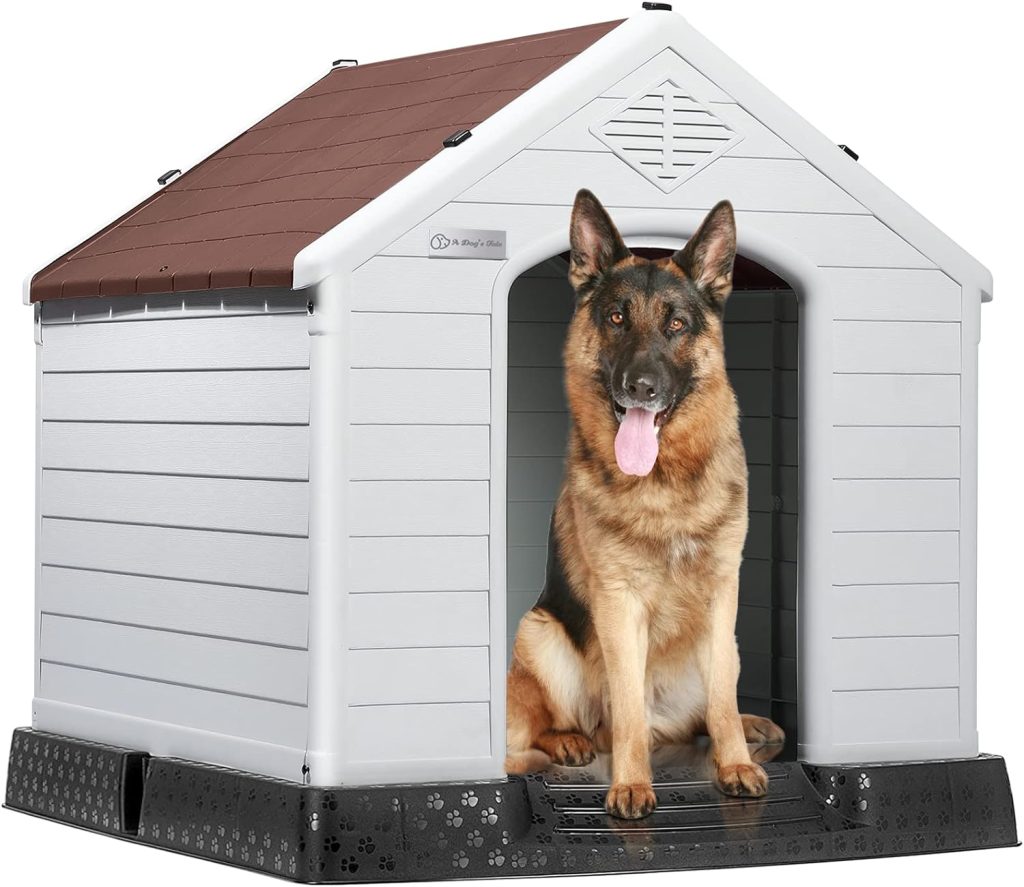

Get $10 off with orders over $100 with code Save10
Ensuring a Cozy Sleeping Area for Your Dog
Creating a warm and comfortable sleeping area for your furry friend is essential during colder months. Keep them away from cold drafts by placing their bed in a cozy spot. To provide extra warmth, use warm bedding like thick blankets, doggy sleeping bags, or heated pads. Ensure the bedding is clean, dry, and free of parasites that thrive in warm environments. Consider larger bedding for bigger dogs who may need more warmth due to their body size. Pay attention to your dog’s behavior and adjust the bedding if necessary to ensure their utmost comfort and coziness.
Importance of a Dog Jacket in Cold Weather
The importance of a dog jacket, in weather cannot be overstated. During the winter, it is crucial to keep our friends comfortable and well-protected. Dog jackets provide insulation, warmth, and shield against weather conditions. When choosing a jacket, look for features such as water resistance, windproofing, and a cozy lining. Additionally, adjustable straps, elements for visibility, and an outer layer that repels water are factors to consider. A fitting jacket is essential as it retains body heat and prevents air from reaching the skin. This is especially important for dogs with skin or those with coats. By investing in a good quality dog jacket, you can ensure that your loyal companion stays warm and safe, throughout the winter season.

Snow, Ice and Extreme Cold Protection
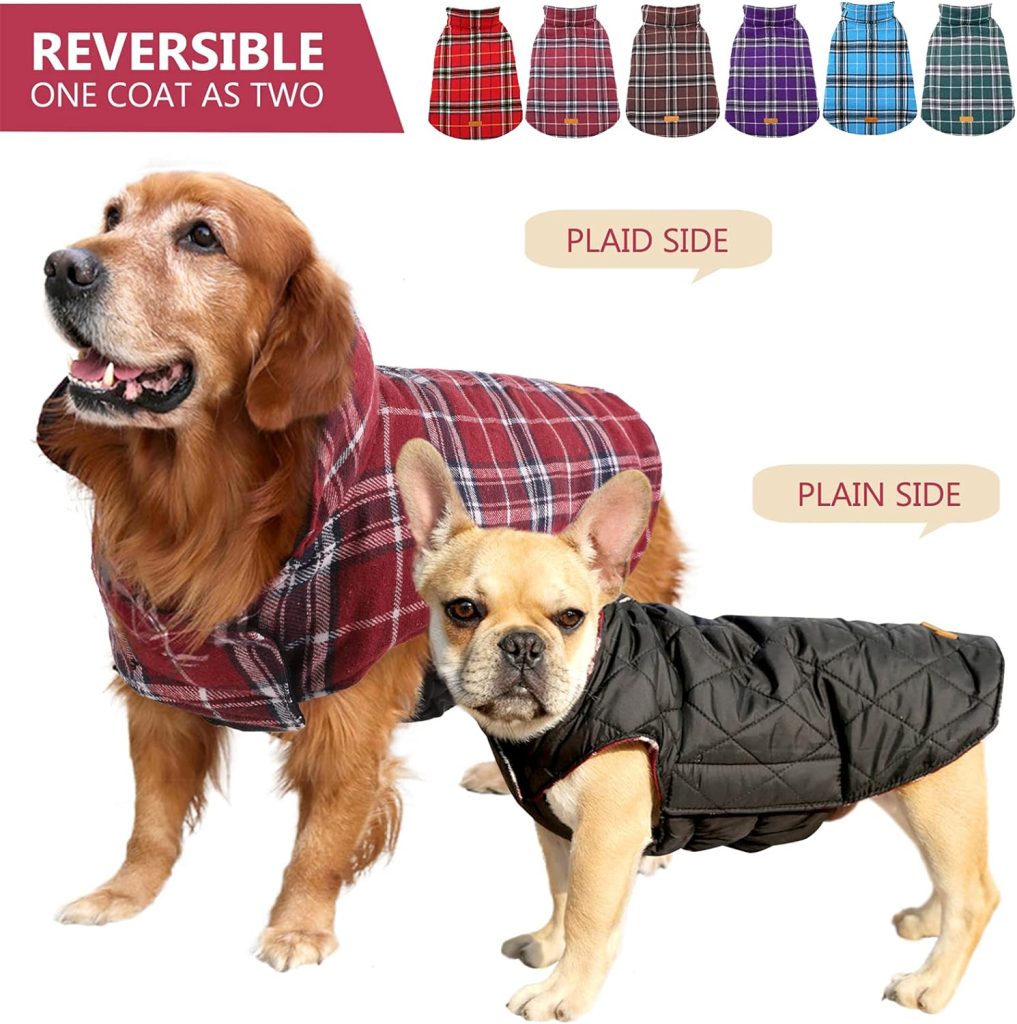
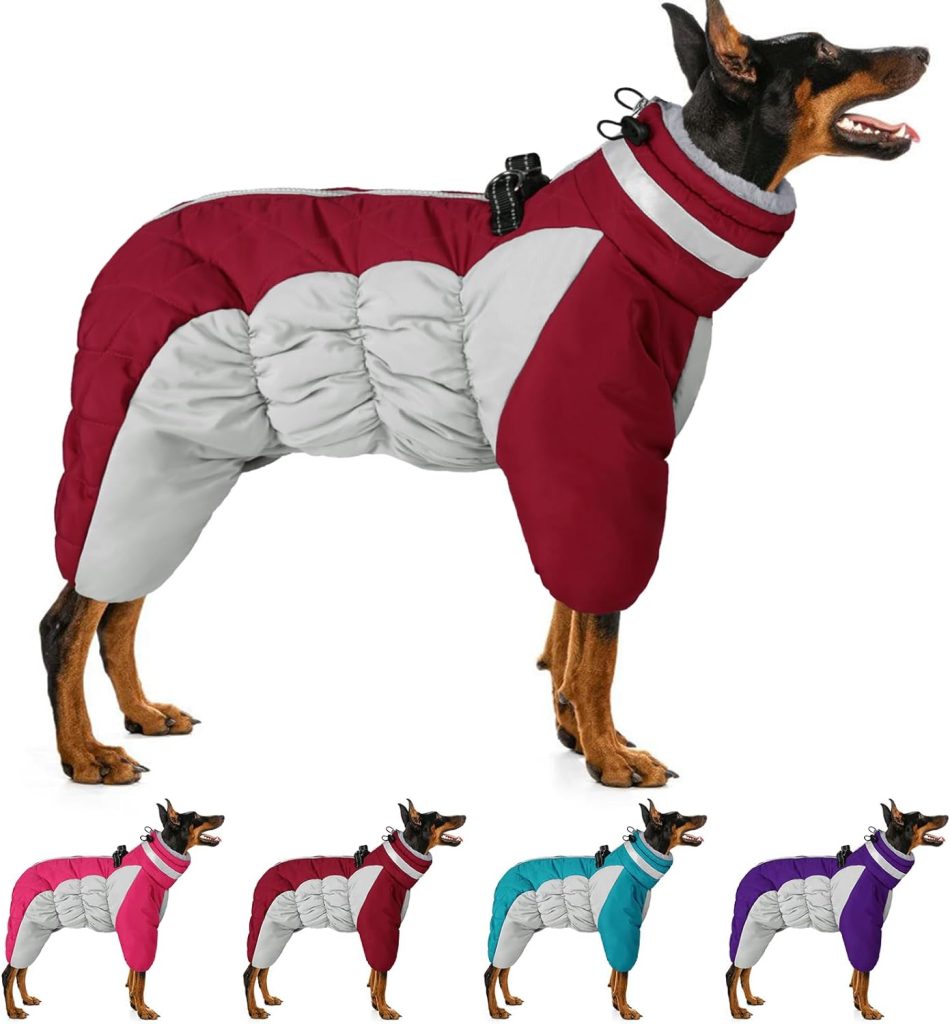
Protecting Your Dog’s Paws in Winter
In winter, protect your dog’s paws from the cold and hazards. Use dog boots for insulation and shield them from cold temperatures and ice. Apply paw balm to moisturize and protect paw pads. Avoid long walks on cold surfaces to prevent injuries. Clean your dog’s paws after walks to remove ice, salt, and chemicals. Consider using paw wax for added warmth and protection. Keep your dog’s paws healthy and safe this winter.
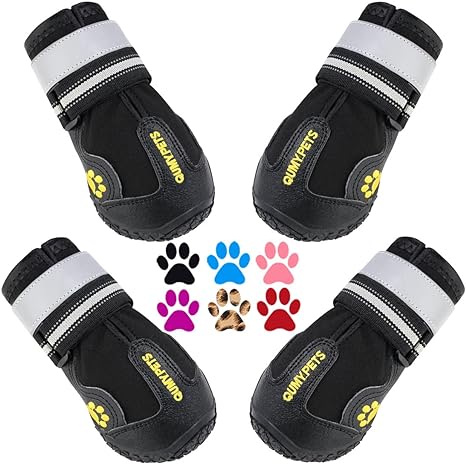

Dealing with Hypothermia in Dogs
Recognizing the signs of hypothermia, in dogs during winter is crucial for their well-being. It’s important to be aware of symptoms such as shivering, lethargy, and decreased body temperature. To help warm your friend, you can provide blankets, hot water bottles, or heated dog beds. However, it’s essential to avoid using heat sources or hot air as it can potentially burn their paws or coat. Offering unfrozen water for hydration is also recommended. If the symptoms persist or worsen, seeking assistance is advisable. Remember that even dogs with luxurious coats are not immune to hypothermia so taking precautions to keep them safe during cold months is vital.
First Aid for Dogs with Hypothermia
If your dog is experiencing hypothermia, there are things you can do to provide aid and help them warm up. Start by wrapping your friend in a blanket to keep their body heat intact. Moreover, gently place water bottles near their armpits, groin, and chest area. Make sure to cover their head while leaving their nose and eyes exposed. It’s crucial to monitor their temperature to avoid overheating and try to limit their movement in order to preserve body heat. Remember, these first aid techniques can really make a difference in aiding your dog’s recovery from hypothermia.
When to Seek Veterinary Help for Hypothermia
If your dog’s body temperature drops below 95 degrees Fahrenheit, it’s important to seek attention. If the symptoms of hypothermia don’t improve within 30 minutes while you’re warming your dog, it’s recommended that you consult a vet. If you notice signs, like eyes, shivering, or weakness due to cold exposure, it’s a good idea to contact a veterinarian. Keep in mind that dogs with existing medical conditions, senior dogs, and small breeds are more prone to hypothermia, so seeking professional help promptly is crucial. Trust your instincts; if you have concerns about your dog’s well-being, consulting a veterinarian is always wise.
Additional Measures for Protecting Your Dog in Winter
To ensure that your dog stays warm and safe during the winter, there are a few steps you can take. If your dog spends time outdoors, make sure they have a shelter, like a doghouse or a heated outdoor shelter. Consider installing safety screens on your windows to keep the air out of your home. Provide bedding, such as blankets or straw in their shelters to give them added warmth. It’s important to limit their time, in extreme temperatures to prevent any health issues related to the cold. Remember to check their water bowl, make sure it isn’t frozen, and always provide them with warm water. These measures will help keep your companion cozy and well-protected throughout winter.
When is it Necessary to Bring Your Dog Indoors?
It’s important to bring your dog when the temperature drops below freezing for long periods of time. Dogs with hair small breeds or those who are older are more susceptible to the weather, so it’s best to keep them indoors during chilly conditions. If you notice any signs that your dog’s uncomfortable, such as shivering or seeking warmth, it’s an idea to bring them inside. During the winter months or in weather conditions, you might want to consider bringing dogs indoors. Just pay attention to your dog’s body language and behavior – they’ll let you know when they need a place indoors.
Conclusion
To prioritize your dog’s well-being in cold weather, take these steps: recognize signs of hypothermia and act quickly, provide a warm environment with a suitable doghouse and cozy sleeping area, invest in protective gear like a dog jacket and paw boots to prevent cold-related injuries, and bring your dog indoors when necessary. These tips will help keep your furry friend warm, happy, and healthy all winter long.


